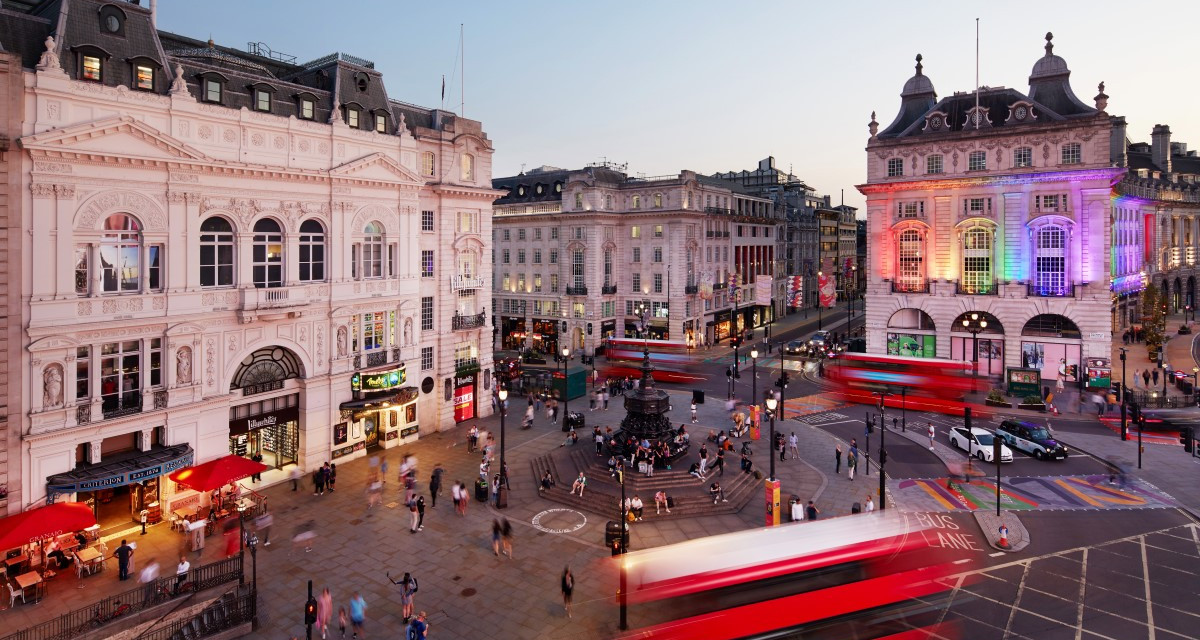Ros Morgan, chief executive of Heart of London Business Alliance, tells how the consortium is boosting commerce and culture in the West End
As told to Selma Day

What is Heart of London?
It is a not-for-profit, commercially-minded, membership organisation representing over 600 businesses across Piccadilly and Jermyn Street; Leicester Square, Piccadilly Circus and Haymarket; and St Martin’s. Its overall purpose is to protect and promote the commercial and cultural wellbeing of the West End on behalf of its members.
What can London do to retain its status as an international destination?
For London to stay competitive, we need to invest in it. We have identified and set out plans for public realm improvement across the West End, which are designed to preserve the area’s unique character, provide higher-quality spaces for workers, visitors and residents, as well as provide a demonstrable return on investment. We have laid out plans for a new Arts Quarter, uplifting a network of small streets behind the National Gallery, Leicester Square, and Piccadilly Circus, which is anticipated to increase rental values by 35 per cent, boost jobs by 13 per cent and generate £420 million in GVA.
What are the challenges?
There are many challenges facing London, including high living costs and poverty levels, footfall unlikely to recover to 100 per cent of pre-pandemic levels any time soon, and the lowest UK region of people engaging with the arts. My focus is to help overcome these challenges by removing barriers to growth, encouraging investment and demonstrating London’s value to ensure that levelling up is not done at London’s expense.
We need to overhaul the business rates system to level the playing field between bricks and mortar stores and online businesses. And we need to attract international visitors by introducing tax-free shopping, which is estimated to bring in £350 million a year to HM Treasury, relaxing Sunday trading rules in the West End, which would deliver an additional £340 million in net sales annually, and creating a safer, more welcoming environment by licensing pedicabs.
We also need a public transport system that is reliable, accessible, affordable and fit for a global 24-hour city and a business-led, re-skilling programme to help address recruitment challenges.
How important are art activations and experiences in bringing people back to the West End?
We believe it is vital to bring culture out from behind closed doors and onto the streets and to integrate art into the built environment to make it more accessible to more people. The cultural activations we organise in the West End include an interactive Augmented Reality Gallery, Inside Out, the Tusk Trust Trail, Piccadilly Take Over, the Take A Moment campaign and Leicester Squares’ Scenes in the Square.
Culture is at the epicentre of the UK’s success at a social and economic level, but more support is needed. Consumer initiatives like our Art of London programme and the Mayor’s ‘Let’s Do London’ campaign have helped drive tourists back to the area. But greater investment is essential if we are to stay ahead of our competitors.
What impact has the Elizabeth Line had so far on the West End?
The Bond Street and Tottenham Court Road stations have finally opened, with the latter being the busiest station in London, with over 80 per cent increased use since the Elizabeth Line launched, enabling millions more individual journeys into the West End. With its step-free design, the Elizabeth Line also marks a leap forward for accessibility in central London. Accessibility for all is something that we really need to improve in London.
What are the challenges of looking after areas as varied as Leicester Square and St James’s?
We manage and maintain the different areas of the West End according to their character and need, but we keep the same exacting standards of area management throughout, offering day-to-day operations for so many people. Every day of the week, our street cleansing team goes beyond the public service provision offered by the council, with pavement hot-washing and dedicated litter picker teams. Our 24/7 on-street security teams are present to respond and deal with street nuisance issues and assist businesses who are impacted by anti-social behaviour and low level on-street crime issues.
What are Heart of London’s plans for expansion?
This year, we hope to expand further south into St James’s. From October 2023, we will be able to secure over £5 million per annum of ring-fenced investment for the area as part of a coherent, fully-financed plan, which will pull together the St James’s Neighbourhood Plan for 2022-2040, Westminster’s City Plan 2019-2040 and the Mayor of London’s London Plan and drive the prosperity of St James’s and the wider West End.
Do you have any place-shaping plans for the St James’s area?
If our ballot win is successful, we will work proactively with the community, our members and partners to ensure St James’s beauty and character are protected and to explore priorities to improve its public spaces and pedestrian and walking routes. We are currently working with the St James’s Conservation Trust and property owners on a £20 million “Piccadilly and Green Park Gateway” scheme, where our vision is to provide safer and more accessible footways from and around Green Park Station and into St James’s, while respecting the historic character of the area.
How has the move towards increased hybrid working affected commercial property in St James’s?
Demand for office space in central London has held firm despite the ongoing work-from-home trend and economic downturn risking upending the capital’s market. The challenge remains how to curate the office and amenity offerings for staff to increase journeys to work on Mondays and Fridays. That said, London’s new generation of super-sustainable, smart workplaces remain in demand, which is continuing to deliver the potential for prime rental growth and attracting billions of global capital to London real estate assets.
What is Heart of London doing on the sustainability front?
We are creating a Sustainability Delivery Plan for the area with local partners and residents to improve air quality, reduce carbon emissions and support biodiversity with more greening. We are partnering with the Mayor of London’s Business Climate Challenge (BCC), a funded energy-efficiency programme developed to offer free customised technical advice to help make their workplaces more energy efficient. We are also delivering a second build waste consolidation hub to the area to help further reduce emissions by reducing the number of waste removal vehicles required.
What has been your proudest achievement so far?
One thing I am passionate about and am most proud of is our work to transform the West End into a living gallery through art trails and installations, which has driven footfall and increased dwell time across the area. During the first lockdown, we secured a £1.57 billion support package for the arts and culture sector, which has meant the retention of art galleries, cultural institutions and theatres. And it is great to see in the recent Spring Budget that cultural tax reliefs for theatres, orchestras, museums and galleries have been extended for a further two years, which is something we have been calling for. These institutions remain our greatest assets and are the backbone of our global standing and our place in the national psyche.







